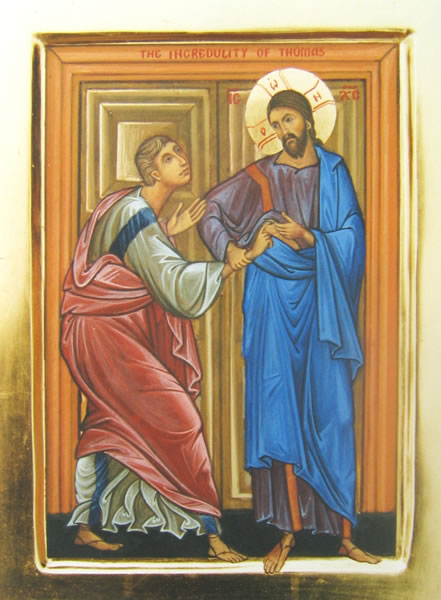Mount Calvary Church
Eutaw Street and Madison Avenue
Baltimore, Maryland
A Roman Catholic Parish
The Personal Ordinariate of the Chair of St. Peter
Anglican Use
Rev. Albert Scharbach, Pastor
Dr. Allen Buskirk, Choirmaster
Thomas Sunday
April 28, 2019
8:00 A.M. Said Mass
10:00 A.M. Sung Mass
____________________
Common
Healey Willan (1880-1968)
Missa de S. Maria Magdalena
____________________
Anthems
Luca Marenzio (1556-1599)
Quia vidisti me, Thoma, credidisti: beati qui non viderunt, et crediderunt. Alleluia.
Because thou hast seen me, Thomas, thou hast believed: blessed are they that have not seen, and yet have believed. Alleluia.
Italian composer and singer Luca Marenzio (ca. 1553-1599) was considered by many Renaissance musicians to be the chief archetype of the expressive 16th-century Italian madrigal style. The text of this motet is from John 20: 29 – the Antiphon for the Feast of St Thomas, the great doubter. Marenzio’s madrigalian style of text painting is well served here. Note the homophonic emphasis given to the text “beati qui non viderunt” (blessed are they that have not seen). The motet concludes with an imitative and joyful “Alleluia.”
__________
Giovanni Pierluigi da Palestrina (1525-1594)
Haec dies quam fecit Dominus: exultemus et laetemur in ea, alleluia.
This is the day which the Lord hath made: let us be glad and rejoice therein. Alleluia.
_____________________
Hymns
O sons and daughters (FILII ET FILIAE) is a translation by John Mason Neale (1818-1866) of the hymn O filii et filiae by the Franciscan Jean Tisserand (died 1494). It recounts the appearance of the Risen Christ to both the women on Easter and to the disciples in the upper room. We are addressed in the stanza How blest are they who have not seen / And yet whose faith has constant been, / For they eternal life shall win. Although we have not seen the Risen Lord with our bodily eyes, we see Him with the eyes of faith, especially in the Eucharist, and are loyal to Him.
Thou hallowed chosen morn of praise (EISENACH) is a poem by John of Damascus, translated by John Mason Neale.
That Easter day with joy was bright (PUER NOBIS) is a translation also by John Mason Neale of the Latin hymn Aurora lucis rutilat, probably by St. Ambrose (330-397). Augustine said that Ambrose set popular hymns to the meter of Roman marching songs to propagate orthodox Catholic theology, because the Arians were using hymns to propagate error.
